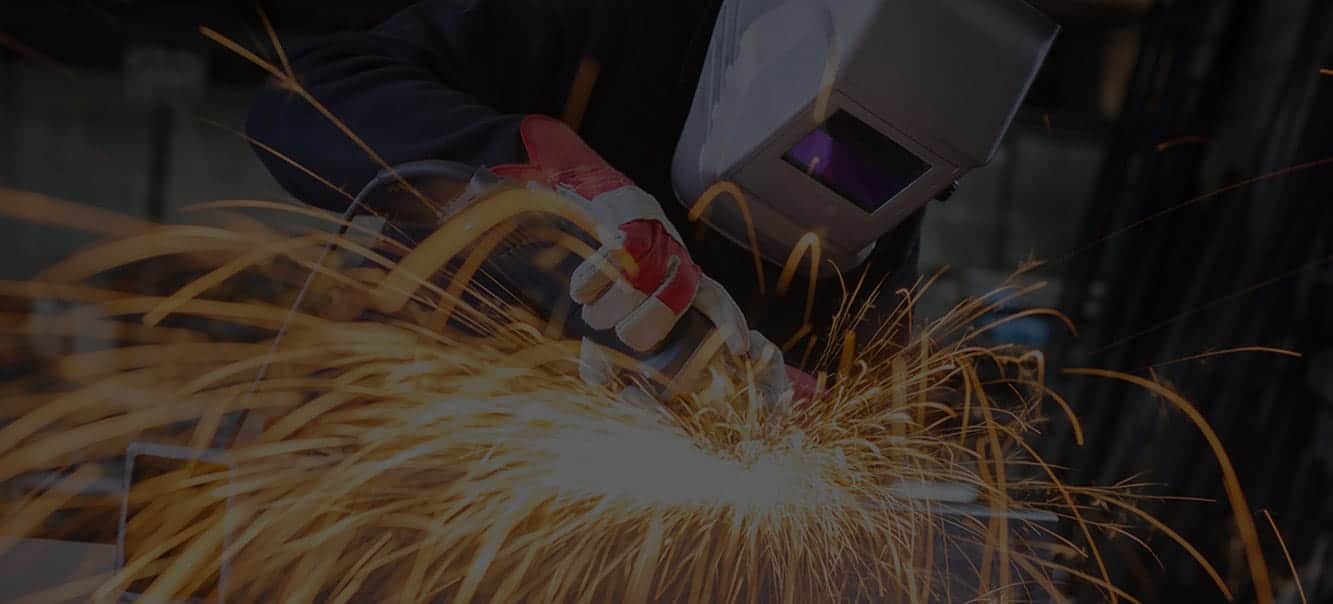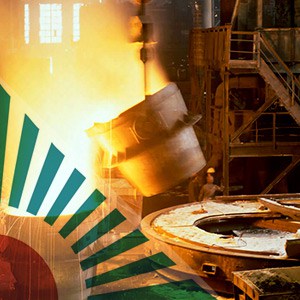Enforcing local procurement rules would help offset weak demand
SEIFSA CEO Kaizer Nyatsumba reflects back on 2018 and offer insight into prospects for the metals and engineering sector n 2019.
Persistent Rise in Inflation Is Worrying, Says SEIFSA
Johannesburg, 12 December 2018 - The Steel and Engineering Industries Federation of Southern Africa (SEIFSA) is disappointed by the latest Consumer Price Index (CPI) figures, which indicate that inflation increased further in November 2018, despite the decision by the South African Reserve Bank to raise the repurchase rate by 25 basis point to 6,75% from 6,50% last month in an effort to contain inflation within the mid-point of its 3-6 percent target band.
The CPI figures released by Statistics South Africa (StatsSA) today indicate that the annual consumer price inflation increased to 5.2 percent in November 2018, from 5.1 percent in October 2018. On a month-on-month basis, the CPI increased by 0.2 percent in November 2018.
SEIFSA Economist Marique Kruger said given that the demand for the Metals and Engineering (M&E) cluster’s intermediate products is a derived one based on consumer spending, the persistent rise in inflation is cause for concern.
However, Ms Kruger said the increase in the CPI was expected going into the festive season, underpinned by a seasonal pattern of higher consumer spending, galloping November fuel prices and a generally upward-trending Producer Price Index (PPI) for both the intermediate and final manufactured goods. The concern is that the increasing trend in inflation is likely to continue in the near term, compelling consumers to cut back on spending for final manufactured goods which warrant the use of intermediate manufactured products of the M&E cluster of industries as inputs.
“The latest inflation data is disappointing and does not augur well for businesses in the M&E cluster of industries and the broader manufacturing sector. The concern is that companies will continue to face headwinds, including higher interest rates, operational expenses and inflationary intermediate inputs costs,” Ms Kruger said.
In addition, she said it was worrying that the PPI data to be released tomorrow is likely to maintain its upward pressure on inflation.
SEIFSA closely monitors the release of both the CPI and PPI data for final and intermediate manufactured goods, amongst other indicators of its price and index pages (PIPS), due to their importance to the M&E sector. Both indices are used by companies in the secto in financial decision-making processes towards costs mitigation r through, for instance, Contract Price Adjustment processes.
In conclusion, Ms Kruger said despite the difficult operating environment, companies should capitalise on the prevailing signs of a silver lining to build on lower fuel prices for December and slowly improving domestic demand, reduce operational costs and positively boost margins and profit levels.
Issued by:
Ollie Madlala
Communications Manager
Tel: (011) 298 9411 / 082 602 1725
Email: ollie@seifsa.co.za
Web: www.seifsa.co.za
SEIFSA is a National Federation representing 23 independent employer
Associations in the metals and engineering industries, with a combined membership of 1600 companies employing around 200 000 employees. The Federation was formed in 1943 and its member companies range from giant steel-making companies to micro-enterprises employing fewer than 50 people.
Improving M & E Production Is Encouraging, says SEIFSA
Johannesburg, 11 December 2018 - The Steel and Engineering Industries Federation of Southern Africa (SEIFSA) welcomes the preliminary production data for the Metals and Engineering (M&E) cluster of industries released by Statistics South Africa (Stats SA) today.
“The data, which reflects an increase in output for October 2018, augurs well for both the cluster and the broader manufacturing sector,” the Federation’s Chief Economist, Michael Ade, said this afternoon.
After adjusting for the sectoral weights, the preliminary seasonally-adjusted production data for the M&E sector indicated that output improved to 11,9 percent on a year-on-year basis in October 2018, when compared to October 2017. The improved performance is in line with an increase in production in the broader manufacturing sector, which also increased by 3,0 percent year-on-year in October 2018, following comparatively positive but lower output levels recorded in September 2018 and August 2018 respectively.
On a month-on-month basis, the M&E sector also performed well, improving from 0,3 percent in September 2018 to 9,3 percent in October 2018. The sector’s improved monthly performance was mainly supported by higher output in the petroleum, chemicals, rubber and plastic products (1,8 percent) and the basic iron and steel, non-ferrous metal products, metal products and machinery (1,7 percent) sub-industries.
“Against the backdrop of a slowly improving economy, the improvement in production for the cluster is encouraging. Evidently, producers were able to take advantage of a brief strengthening of the rand to capitalise on the importation of cheaper intermediary inputs, leading to the best increase in manufacturing production since the start of the year,” Dr Ade said.
He said the sector’s performance also coincides with an improved pace of the real Gross Domestic Product (GDP) growth, which surprised on the upside during the third quarter of 2018, officially moving the domestic economy out of a technical recession and providing impetus for more output, investment and employment.
Dr Ade said it is very important that the sub-components of the M&E cluster continue to expand, given the need to continuously improve on overall job numbers in the broader manufacturing, which is still a cause for concern. The latest Quarterly Employment Statistics numbers released by Stats SA earlier today shows that manufacturing employment decreased by 0,6% or 7,000 jobs quarter on quarter in June 2018 to September 2018, despite the sector’s positive contribution to GDP growth in the same quarter.
Dr Ade said this highlights the need to maintain the output growth momentum towards better employment numbers.
Dr Ade said that he hoped that the encouraging increase in domestic growth will translate to higher demand for intermediate and final manufactured goods, which will invariably have a positive impact on production and employment within the manufacturing sector. He noted that, importantly, businesses are optimistic that the recent slowdown in fuel prices will also have a positive impact on companies’ logistics costs in the short term, thus enabling an up-tick in business activity to the expansionary zone.
“These dynamics are encouraging and SEIFSA is optimistic that the basis for a continuous improvement in output going into the new year now exists for businesses to leverage on, and further expand,” Dr Ade concluded.
Ends
SEIFSA is a National Federation representing 23 independent employer Associations in the metals and engineering industries, with a combined membership of 1600 companies employing around 200 000 employees. The Federation was formed in 1943 and its member companies range from giant steel-making corporations to micro-enterprises employing fewer than 50 people.
SEIFSA Welcomes SA’s Exit From Recession And Urges Businesses To Capitalise On Improving Demand In Order To Expand
Johannesburg, 4 December 2018 – The Steel and Engineering Industries Federation of Southern Africa (SEIFSA) welcomes South Africa’s official exit from a technical recession in the third quarter of 2018, and urges businesses to capitalise on improving local demand in order to expand.
South Africa’s real GDP increased by 2,2% in the third quarter of 2018, following a revised seasonally-adjusted 0,4% quarter-on-quarter (q/q) decrease recorded in quarter two of 2018. The broader manufacturing sector’s performance was equally encouraging, with the sector significantly contributing to growth in GDP in the third quarter.
Speaking after today’s release of GDP numbers, SEIFSA Chief Economist Michael Ade said the biggest concern often raised by stakeholders in the broader manufacturing sector as a stumbling block to expansion, profit and job creation is that of stagnant or poor demand. Dr Ade said although other documented constraints still prevail, the overriding challenge is that of lack of demand, with poor local demand often cited by businesses as the main reason for their increasingly turning to regional African and global markets for sales, despite the additional logistic costs involved.
“The improvement in GDP growth is, therefore, encouraging as it provides a platform for local businesses to be inward looking, against the backdrop of an improved demand for their intermediate and finished products,” Dr Ade said.
However, he warned that although South Africa has officially exited the recession, challenges still prevail. Although the improvement in growth signals a step in the right direction, the economy and businesses are still under duress characterised by high intermediate and operational costs, poor ratings from Fitch and S&P (which still rate South Africa’s debt at sub-investment grade or junk status), vulnerability to investor sentiments and poor business and consumer confidence.
He said much work still needs to be done to revive a stuttering South African economy and support industrial growth and expansion. For this to happen, Dr Ade said urgent intervention is needed to prevent the recent electricity blackouts from spiraling out of control as the ripple effect from load shedding will inevitably place businesses under duress, discourage investment and impact negatively on company output and economic growth. Accordingly, the Government needs to continue with identified reforms in beleaguered State-owned enterprises (SOEs), while also containing high debt levels.
“The SOEs and municipalities, through their designation for localisation imperatives, are important parts of a kaleidoscope of end-users which are very key to the survival of the manufacturing sector, including its diverse metals and engineering cluster of industries. Therefore, the SOEs and municipalities need to be in good shape in order to continuously sustain positive GDP growth projections and demand levels and boost expansion in industrial production,” Dr Ade said.
He added that the support of these institutions is important for continuous improvement in manufacturing, especially considering that manufacturing is amongst the sectors which contributed positively to the lift in third-quarter GDP growth momentum.
Dr Ade said although the manufacturing sector seems to be slowly regaining its influence, underpinned by repeated recording of positive monthly output figures since April 2018, it still needs more support.
Going into the new year, Dr Ade said some signs of green shoots which are necessary to kickstart the economy are evident for businesses to capitalise on and move to the next level of growth. He observed that the weak rand-to-dollar exchange rate which presented the biggest challenge to businesses in the manufacturing sector has strengthened, fuel prices have temporarily slowed (with a possible breather on logistic costs), and the PMI rebounded to 49,5 index points in November, representing the first increase after three consecutive months of declines and the best performance since July 2018.
“Above all, domestic demand – which is the most important and sustainable driver of growth for the manufacturing sector, irrespective of Government incentives or protectionism – has improved and stakeholders are very hopeful,” he said.
In conclusion, Dr Ade said SEIFSA is also hopeful about constant improvement in GDP growth, but re-iterates the need for more swiftness in policy implementation and consistency in monitoring and evaluation of relevant interventions in order to maintain the positive growth trajectory.
SEIFSA is a National Federation representing 21 independent employer Associations in the metals and engineering industries, with a combined membership of 1600 companies employing around 200 000 employees. The Federation was formed in 1943 and its member companies range from giant steel-making corporations to micro-enterprises employing fewer than 50 people.
SEIFSA Encouraged By Improvement In Broader Manufacturing Purchasing Managers’ Index
Johannesburg, 3 December 2018 - The Steel and Engineering Industries Federation of Southern Africa (SEIFSA) welcomes the improvement in overall business activity in the broader manufacturing sector, as reflected in the ABSA Purchasing Managers’ Index (PMI) released today.
As a lead indicator and the first data point that is published for the preceding month, the PMI sets the tone for how manufacturers and various stakeholders in the broader manufacturing sector view the month ahead.
The headline PMI data released today improved from 42.4 percent in October 2018 to 49.5 percent in November 2018, placing the PMI data virtually on par with the 50-neutral level which separates expansion from contraction.
“The rebound in the data is encouraging. Despite low business and consumer confidence, it seems that manufacturing activity is generally improving, albeit rather slowly and still under pressure,” SEIFSA Economist Marique Kruger said.
She added that it was also encouraging to note that almost all the sub-indices improved in November 2018 vis-à-vis October 2018, with the new sales orders, inventories and suppliers’ performance trending in expansionary zones.
The only blip in the performance of the sub-indices was that of the employment sub-index, which still trends in the contractionary zone and seems to have taken a knock in November 2018 when compared to October 2018.
Ms Kruger said SEFSA remained hopeful that the increasing trend in the sub-indices would continue and eventually improve the composite seasonally-adjusted PMI for December 2018.
“Progression in the PMI is important towards boosting overall economic activity for quarter 4 of 2018, also enabling businesses to start the year 2019 on a positive note,” Ms Kruger concluded.
SEIFSA is a National Federation representing 21 independent employer Associations in the metals and engineering industries, with a combined membership of 1600 companies employing around 200 000 employees. The Federation was formed in 1943 and its member companies range from giant steel-making companies to micro-enterprises employing fewer than 50 people.
Companies Unlikely To Benefit From Rising PPI For Intermediate Manufactured Goods Unless Inflation Eases Further, Says SEIFSA
Johannesburg, 29 November 2018 – Businesses in the metals and engineering (M&E) cluster are unlikely to benefit from a continuous increase in the selling price inflation in October 2018, given the current domestic economic environment underpinned by high petrol prices and an up-tick in both the prime interest rate and inflation, the Steel and Engineering Industries Federation of Southern Africa (SEIFSA) said today.
Speaking after today’s release of Producer Price Index (PPI) figures by Statistics South Africa (StatsSA), SEIFSA Chief Economist Michael Ade said the latest release shows the annual percentage change in the PPI for final manufactured goods was 6,9% in October 2018, compared with 6,2% in September 2018. The data also shows a less-than- proportionate increase in the PPI for intermediate manufactured goods, considered a proxy for selling price inflation, from 7,7% in September 2018 to 7,4%. From September 2018 to October 2018, the PPI for intermediate manufactured goods increased by 1,0%.
However, Dr Ade said it is worrisome to note that notwithstanding the improving trend in selling price inflation for intermediate manufactured goods, companies are still constrained by derived logistics costs from high fuel prices and the double whammy of rising prices and higher prime interest rate.
“As captured by recent official releases from StatsSA and the South African Reserve Bank, the headline CPI correspondingly increased from 4,9% in September 2018 to 5,1% in October 2018, alongside the interest rate which increased from 6,5% in September to 6,75% in October. These dynamics definitely have the potential of compounding the dire situation of most businesses. The bigger concern is the direct impact on the depleting margins of companies, with dreadful extended socio-economic consequences on the broader economy,” Dr Ade said.
He said the direct transmission effects of the negative shocks arising from inflation, high costs of servicing existing loans and from snowballing borrowing costs from the financial service providers will impact negatively on consumer demand, thereby reducing the ability of producers to increase selling prices.
Dr Ade said that given that most of the intermediate goods produced in the M&E cluster are further utilised in the production of final manufactured goods which are largely consumed by domestic consumers, the reverse knock-on effect on the M&E cluster will be huge. He said the sharp deterioration in both the consumer and business confidence indices, as captured by the FNB/BER confidence indices, was equally of concern. .
The data reflect consumer confidence dipping from 22 in the second quarter to 7 in the third quarter of the year, while business confidence also fell from 40 in the second quarter to 34 in the third quarter. The bleak picture is further corroborated by the poor performance of the Absa business expectation index, which slowed down from 45,8 in September to 41,7 in October, in the midst of a technical recession and low domestic demand.
Dr Ade said that the lack of demand will invariably affect the speed with which intermediate manufactured goods leave the factories, steel mills, foundries, smelters and warehouses.
“Also, given the direct correlation that exists between changes in the PPI at the retail level (finished goods) and consumers at the point of sale, increases in both inflation and the cost of borrowing will adversely affect the speed at which manufactured goods are sold. Given these constraints, businesses are unlikely to benefit from prevailing increasing selling price inflation as it becomes difficult to pass price increases on to the final consumers continuously,” Dr Ade said.
In conclusion, Dr Ade pointed out that the PPI for the final and intermediate manufactured goods are important drivers of consumer demand. He said both indicators also generally act as a preview of changes in the rate of inflation.
Dr Ade cautioned that, in analysing both trends, businesses should also give significant consideration to other drivers of consumer spending.
SEIFSA is a National Federation representing 23 independent employer
Associations in the metals and engineering industries, with a combined membership of 1600 companies employing around 200 000 employees. The Federation was formed in 1943 and its member companies range from giant steel-making companies to micro-enterprises employing fewer than 50 people.
Artisan Development Project
The SEIFSA Training Centre hereby extends an invitation to member companies to participate in an Artisan Development Project known as War on Leaks, in partnership with the Department of Water and Sanitation and the EWSETA.
Introduction
This project aims to support the National Skills Accord initiative and train 15000 artisans. It includes the following outcomes:
Artisan Development Programme
- Recruitment and selection of candidates;
- Indenture apprentices on training contracts;
- Institutional training of 26 weeks at the SEIFSA Training Centre according to SETA qualification requirements;
- Placement of candidates for practical training at employers; and
- Final training and trade testing at the SEIFSA Training Centre.
Project Costs
The following project costs will be covered by the Project:
- Recruitment and selection of candidates;
- Institutional and final training costs;
- A monthly stipend for candidates for the duration of training programme;
- A toolkit and PPE needed during formal training phases;
- Monitoring of candidates’ progress at employer sites; and
- Administration and reporting of candidates’ progress.
Employer Obligations
- Willingness of participating employer/s to take on candidate/s for practical training and exposure on site (the candidates should be able to start with practical, on-the-job training, on site, from January 2019);
- Induction and workplace safety requirements;
- PPE needed as to work site requirements; and
- Mentor candidates through the guidance of a qualified artisan over a period of 18-24 months.
Artisan Trades
Candidates will be trained in the following trades:
- Fitter and Turner/Mechanical (30 trainees)
Once the candidate has completed his/her trade test successfully, the employer is under no obligation to offer him/her employment. This is a general outline of the training programme and a serious attempt by the Department of Water and Sanitation, the EWSETA and the SEIFSA Training Centre to contribute to the development of artisans.
If you are interested in participating in this initiative, please forward the number of apprentices, per trade, that your organisation is willing to accommodate in the workplace to Melanie@seifsa.co.za or Desmond@seifsa.co.za.
Yours in Skills Development
Melanie Mulholland
Human Capital & Skills Development Executive
HR Professional - SABPP Registration # 10205
Skills Development Practioner (ASDSA)
Employment Tax Incentive
It has come to our attention that there appears to be inaccurate information circulating with regards to the Employment Tax Incentive (ETI) that was negotiated at NEDLAC and agreed to under the Jobs Summit Agreement . The inaccurate information is to the effect that the ETI has been increased to earnings of R8000.00 and age increased to 35 years from 1 April 2019.
BUSA confirmed with National Treasury, and referenced the relevant legislative provision – the Taxation Laws Amendment Bill - passed by the National Assembly yesterday (refer to page 54). Both the current age limit (up to 30 years of age) applicable to ETI and the monetary limit of R6000 remain unchanged, but the ETI applicability has been extended to 1 January 2029 as per the Jobs Summit Agreement.
The ETI is the only direct employment incentive in South Africa. The extension of the time period of application of the ETI to 10 years is a positive step. It creates the necessary stability in the short and medium term for businesses to enhance the use of the incentive in order to promote employment of young people. It is also a sufficient period for smaller businesses to take up the opportunity if they may not have already done so due to the short duration of the previous incentive.
Should you require any further clarity or information please do not hesitate to contact SEIFSA’s HC&SD team for assistance on 011 298 9400.
Reserve Bank’s Decision To Hike Interest Rates Is Disappointing, Says SEIFSA
Johannesburg, 22 November 2018 – The Steel and Engineering Industries Federation of Southern Africa (SEIFSA) is extremely disappointed over the South African Reserve Bank’s (SARB) decision to hike interest rates by 25 basis points to 6.75 percent, and is concerned that this decision deprives a very weak economy of a much-needed boost.
Speaking after the announcement by the Reserve Bank this afternoon, SEIFSA Economist Marique Kruger said the failure of the SARB’s Monetary Policy Committee to leave interest rates unchanged, at the very least, is disappointing for beleaguered business and over-indebted consumers, especially in the run-up the festive season.
However, Ms Kruger said that given the upside risks that an accommodative monetary policy stance would have on the domestic economy’s inflationary outlook, the decision is understandable. She said it was unfortunate that businesses in the broader domestic economy – and the metals and engineering sector in particular continues to face headwinds, amid increasing operational expenses.
“The generally weaker exchange rate and the higher petrol price impact negatively on the cost of doing business, while increased inflationary pressures caused by an increase in annual consumer price inflation exacerbate the challenging situation,” said Ms Kruger.
She said that given the current state of the economy and the weak domestic demand environment, the decision to increase interest rates will invariably add to the cost of doing business, thereby impacting negatively on the margins of struggling businesses.
SEIFSA is a National Federation representing 23 independent employer. Associations in the metals and engineering industries, with a combined membership of 1600 companies employing around 200 000 employees. The Federation was formed in 1943 and its member companies range from giant steel-making companies to micro-enterprises employing fewer than 50 people.
SEIFSA Concerned About Increase in Inflation Rate
Johannesburg, 21 November 2018 – The increase in the official inflation number released by Statistics South Africa (StatsSA) today does not bode well for hard-pressed businesses in the Metals and Engineering (M&E) cluster, which continue to face headwinds amid low levels of domestic demand, a generally weaker exchange rate and increasing operational expenses, the Steel and Engineering Industries Federation of Southern Africa (SEIFSA) said today.
According to the StatsSA data, the annual Consumer Price Inflation (CPI) increased to 5.1 percent in October 2018, from 4.9 percent in September 2018. The index also registered an increase of 0.5 percent on a month-on-month basis in October 2018.
“An inflationary environment will definitely add to the pressure that local businesses are facing, given its direct impact on consumer demand for goods. Moreover, the generally high petrol price invariably adds to businesses’ logistics costs, and this, in turn, negatively impacts on the cost of doing business. The increase in inflationary pressure is a huge challenge for companies trying to improve on operational efficiency and margins,” SEIFSA Economist Marique Kruger said.
She added that with the official inflation data now trending even closer to the upper band of the South African Reserve inflation target of 3% to 6%, SARB Monetary Policy Committee members find themselves in a difficult position when they meet tomorrow.
“The decision on whether or not to continue with an accommodative monetary policy stance will be a fiercely contested one, given the official mandate of the SARB to contain inflation from galloping away,” said Ms Kruger.
She said that given the current state of the economy, leaving the repo rate unchanged will help in reducing borrowing costs, thereby providing impetus for a rebound in domestic growth.








